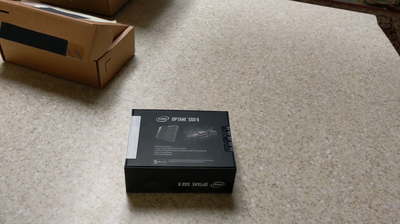
My experience with Intel Optane: 960GB SSD 905P Series (2023)
My thoughts on living with Intel Optane 905P: evaluating cost, everyday performance, endurance, technology, and task suitability.
Introduction
I recently got my hands on the Intel Optane SSD 905P, and I've had some time to test it out in various scenarios, from heavy workload tasks to everyday computing. There's been quite some talk in tech circles (e.g. on Level1Tech's forums) about the performance gains offered by Optane technology. However, with a premium price tag, I wanted to see if it could be worth the investment.
Some photos (click to enlarge)
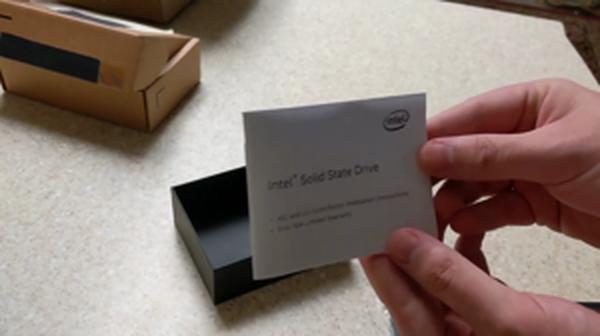
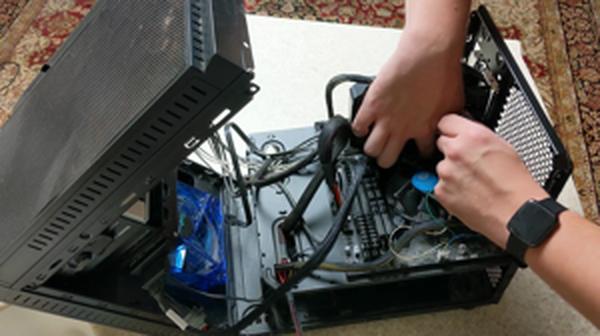
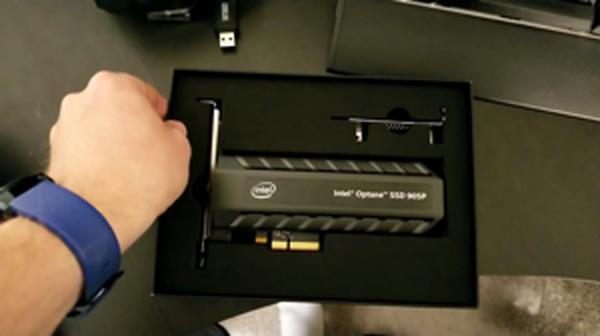

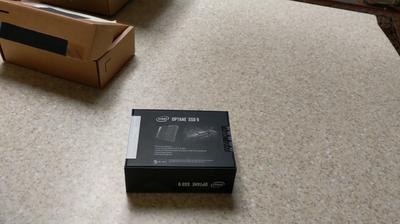
Prices
Initial Impressions and Price Consideration
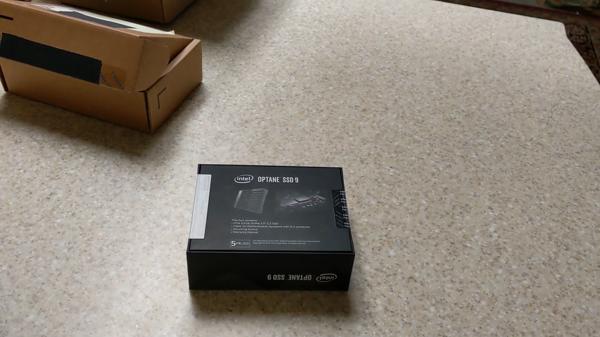
When I first laid my eyes on the Intel Optane SSD 905P, the sleek design caught my attention, especially those customizable LEDs. However, it's the sheer performance capabilities of the drive that really matter of course. My initial impressions:
Unrivalled Speed: It's not just about the high sequential read/write speeds, which are impressive on their own, but the low queue depth performance is where it shines, making everyday tasks feel snappier.
High Price Tag: There's no escaping the fact that this SSD is a premium product, with a price point to match. It could be hard to justify for casual users, but for those where time is money, it's an investment.
Longevity: The petabytes written endurance rating is sky-high, indicating this drive will last an incredibly long time under normal desktop usage.
For Enthusiasts: This isn't just a storage device; it's a top-tier component meant for those looking to push the envelope in performance.
Before committing to the Optane 905P, I weighed the pros and cons:
Pros:
Phenomenal low-depth queue performance
LEDs adding a personalized touch
Incredible endurance ratings
Unmatched speeds for specific professional workloads
Cons:
High cost compared to traditional SSDs
Limited benefit for casual users or basic tasks
Still utilizing PCIe 3.0, whereas newer drives have moved onto PCIe 4.0
It's daunting at first, considering the purchase of such an expensive SSD. But I often remind myself – you're not just paying for storage; you're paying for time. In my line of work, where every second counts, having a drive that can truly keep up with the CPU and memory is worth its weight in gold. Moreover, for anyone out there debating Optane technology, my candid advice is to assess your workload. If it's read and write intensive with high IOPS demand, then the 905P could be your answer.
There are cheaper alternatives, sure. The Samsung 970 Pro, for instance, delivers respectable performance at a fraction of the cost. But it doesn't have the low latency or endurance that truly sets Optane apart. So, while it's overkill for some, for others, it's the only viable option.
In essence, the 905P represents luxury in the SSD world. And just as one might opt for a Ferrari over a Civic, choosing the 905P hinges on your need for speed and resilience in your computing tasks. It's not about flashing the cash - it's about buying time, efficiency, and reliability for those who need it most.
Performance in Daily Computing Tasks

Living with the Intel Optane 905P has been an eye-opening experience when it comes to daily computing tasks. Having tested numerous storage solutions over the years, this drive stands out, but not always in the ways you might expect.
Here's the rundown of my experience:
Speed: It's easy to focus on theoretical benchmarks, but in real-world scenarios, responsiveness is king. With 3D XPoint technology, the 905P consistently delivers snappy system responsiveness, regardless of task complexity. Opening software and large files felt instantaneous compared to traditional SSDs I’ve used.
Lower Queue Depths: Most daily tasks don't queue up data like benchmarking software does. What really matters is performance at low queue depths, and that's where the 905P shines. For tasks like booting up, launching apps, and general system responsiveness, this drive's performance is unmatched.
Endurance: The reassuringly high petabyte write endurance means I'm more focused on getting tasks done than worrying about drive wear. This kind of peace of mind is rare in tech.
But it's not all sunshine and rainbows. One of the primary drawbacks of the 905P in everyday use is the cost-per-gigabyte ratio. Despite the tempting sale prices I've seen, it’s still much more expensive compared to other high-end SSDs. If your daily computer usage revolves around basic tasks like web browsing, document editing, or watching videos, the premium for this drive might feel like overkill.
Another thing to consider is the form factor and interface. Utilizing a U.2 connector, it might require extra steps or adapters to fit into some systems, especially those geared towards general consumer use where NVMe drives have become the norm.
So, is it luxury overkill for daily computing? For some, yes. It's like owning a sports car and only driving in the city; you simply won't utilize its full potential in a typical environment. But if you're dealing with heavy file transfers or working in an environment that benefits from its low-latency prowess, then the 905P feels just right.
From a personal standpoint, I adore the sheer responsiveness and reliability it brings to the table. While I might not need the fastest storage solution for every computing task, knowing that my system can handle whatever workload I throw at it without breaking a sweat is a feeling that's hard to quantify. It makes me more productive and lessens the friction in my workflow. Sure, it's an investment, but it's one that I appreciate every time I power on my system.
Longevity and Endurance: A Drive to Last

When it comes to SSDs, the Intel Optane 905P stands out for its endurance and longevity. Here's the breakdown:
Endurance: The durability of the Optane 905P is insane. I mean, we're talking about up to 27.37 Petabytes Written for the 1.5TB model, as per Intel's specification sheet. This level of endurance is almost like having a drive that lasts a lifetime, considering regular consumer use.
Latency: Optane is king when it comes to low-latency performance. Data-intensive tasks feel snappier, and applications launch so quickly, it's like the drive is anticipating my next move.
Response Time: Real-world responsiveness is where the Optane truly shines. This thing could make even the most basic systems feel like they're running top-notch hardware.
However, there are a couple of downsides. Firstly, the Optane SSD 905P is still running on a PCIe 3.0 interface, which might make one pause when PCIe 4.0 and 5.0 drives are the new standard – though honestly, that's more of a concern on paper for most users. Secondly, the cost-per-gigabyte is pretty high. You could easily find larger capacity drives for less, but those aren't really in the same league as Optane.
Let's talk about practical use. I've seen people wonder if they actually need something like the 905P. For most day-to-day tasks? Probably not. But for those who work with large databases or video editing, the speed and the ability to handle numerous small file transactions can be a game changer.
I'm thinking about my own use case scenario. Beyond gaming and general productivity, the Optane 905P could potentially breathe new life into my aging home server setup. With its exceptional endurance, this drive could handle many read-write cycles – perfect for a machine that's always on and always working.
Now, you might be asking – do ordinary consumers need this level of endurance? Well, if you hate the idea of your drive slowing down over time or fretting about write endurance, then yes. Otherwise, you might see better value elsewhere.
In my book, the Intel Optane 905P isn't overkill, it's future-proofing. It's the comfort of knowing your SSD isn't going to be the first component to falter. Its sheer endurance makes it a standout choice for users who value reliability over everything else. Sure, it's a premium option, but can you really put a price on peace of mind?
Comparing Technologies: Optane vs Traditional SSDs

When it comes to SSD technology, the waters are fairly crowded, but Intel's Optane series, especially the 905P, has carved out a niche for itself, sitting somewhere between the responsiveness of DRAM and the storage capacity of traditional NAND SSDs. My experience with the 905P has led me to appreciate its strengths while recognizing its potential overkill for average users. Here's a breakdown:
Pros:
Unmatched Speed: Optane SSDs, such as the 905P, have blazing fast random read/write speeds, vital for tasks that require quick data access.
Low Latency: The latency on Optane drives is significantly lower compared to traditional SSDs, which is a boon for intensive database work and other professional applications where every millisecond counts.
Incredible Endurance: The 905P's endurance is off the charts — rated in petabytes written (PBW), it's designed to outlast its competitors, making it a potentially once-in-a-lifetime purchase for the right user.
Consistent Performance: Optane drives maintain their performance levels regardless of how full they are, a significant advantage over NAND, which can slow down as it fills up.
Cons:
Cost: There is no sugarcoating it — Optane drives are expensive, and the 905P's cost might be hard to justify unless you're in a field that specifically benefits from its unique features.
Capacity: Compared to regular NVMe SSDs at the same price point, Optane drives like the 905P offer less storage capacity.
Interface Compatibility: The U.2 interface isn’t as broadly supported in consumer motherboards as M.2, so it may necessitate extra hardware or adapters, adding to the total cost.
I've found that the 905P is at its best in scenarios that are bottlenecked by I/O latency rather than by raw throughput. For example, running databases or as a scratch disk for video editing, the difference in responsiveness becomes evident. However, for storing large files or regular gaming, the higher sequential speeds of NVMe SSDs like the Samsung 970 Pro may offer better value.
To summarize, Optane drives are somewhat niche, targeting those who need consistent high-speed data access above all else. For an average user or gamer, regular NVMe SSDs will suffice, but if your workflow is highly I/O-dependent, or if you're just a tech enthusiast who craves the latest and greatest, then the Optane 905P is a formidable contender. Still, Intel's high-performance drive comes at a premium, both in dollars and in capacity per dollar, and it's essential to weigh these considerations before deciding if the Intel Optane 905P fits into your tech ecosystem.
Optane for Gaming and Professional Workloads

In the world of high-performance computing and gaming, the Intel Optane 905P is often a topic of hot debate. Is it really worth it for a gamer or a professional to invest in this technology? After months of using the Optane 905P, I’ve gathered some thoughts that might help in understanding its position in the high-stakes world of storage solutions.
Pros of Optane 905P:
- Mind-blowing endurance: The 905P boasts petabyte written (PBW) ratings that are unheard of in the consumer space, meaning it can handle intense workloads without batting an eyelash. Simply put, it’s a beast when it comes to durability.
- Random Read/Write supremacy: If your workflow involves lots of small random file access, this is where Optane shines. In gaming, this translates to faster game load times, and for professionals, it can mean more responsive data access for tasks like real-time data analysis.
- Consistency under load: Unlike NAND SSDs, Optane’s performance doesn’t degrade under extended periods of heavy writing which is a big win for endurance.
Cons of Optane 905P:
- Price: This is a significant factor. There’s no denying that the 905P carries a premium price tag, which makes it less accessible for the average consumer.
- Size limitations: With gaming titles and professional programs sprawling in size, the available storage space can feel limited compared to traditional SSDs that now easily offer larger capacities.
From a gaming perspective, after installing my favorite titles like Red Dead Redemption 2 and Call of Duty, the difference in load times was noticeable but not game-changing. Intel's Optane is more about delivering a consistent and responsive experience over outright speed. Sure, it's not PCIe 4.0, but raw throughput isn't the whole story.
For professional workloads, the Optane 905P has been particularly useful. As a user who relies on data-intensive applications, the low-latency performance of Optane is where the value lies. Database queries and large compilations feel snappier. Moreover, as a cache for a larger array of slower HDDs, it’s improved overall system responsiveness.
I've seen firsthand, how Optane enhances projects like FlexGen, where large machine learning models are disk-cached due to RAM limitations. It's worth mentioning that Optane provides a notable performance edge here.
To sum it up, living with Intel Optane 905P is a tale of two cities: for gamers, it's luxury overkill unless you demand the fastest loading times regardless of price. However, for data-heavy professionals willing to shell out for performance, it might just be the cutting edge you need. The 905P is your thoroughbred; expensive to maintain but exceptional at what it does. It’s essential to measure its worth against your specific needs, but if you lean towards Optane, these drives promise to keep up with the workloads of today and tomorrow.
Comments (0)
Share